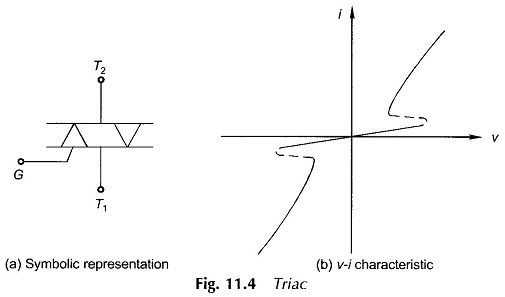What is TRIAC? | Symbolic Representation | VI Characteristics of TRIAC:
What is TRIAC? – The full form of TRIAC is Triode for Alternating Current (TRIAC) or Triode for AC. It is a bilateral switch with three terminals—anode, cathode and a single gate. It conducts in either direction being equivalent to two SCRs connected in antiparallel or back-to-back on a single chip of semiconductor material. It is the most widely used device for power control. Triacs with reasonably large ratings (1000 V, 2000 A) and speeds of 1μs are now available.
Figure 11.4 shows the symbolic representation and the v-i characteristic of a Triode for Alternating Current.
A Triode for Alternating Current is economical compared to a pair of antiparallel thyristors and the control circuit is simpler. However, it is difficult to apply with inductive load and turn-off time is longer.
Triode for Alternating Current are normally used for phase control with a resistive load (i.e. lamp dimming and heater control type applications. The state-of-the-art device voltage and current ratings are much smaller than thyristors.
